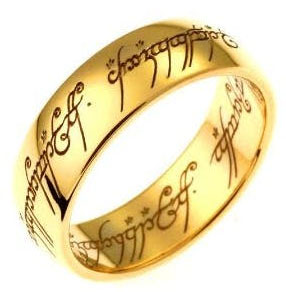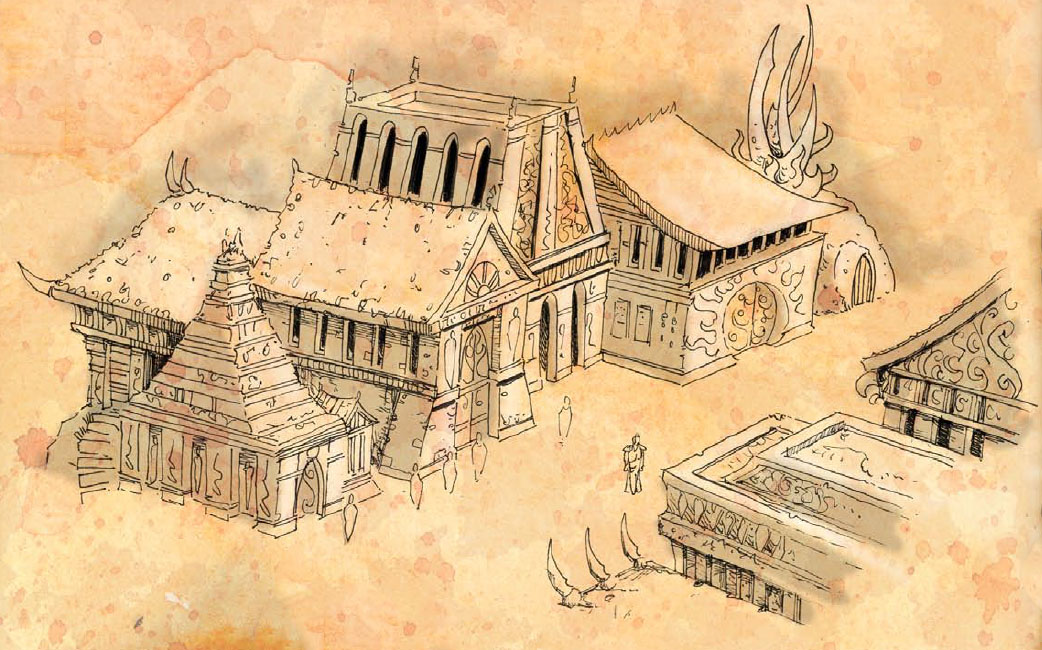IN THE SHADOW OF THE SPIRE
Harvesttime – Part 3: Tee and the Greeting of Old Friends
This fracture, however, is minor compared to the Reformist movement which began in Astalia (one of the Vennoc Protectorates).
When creating our fantasy worlds, one thing I think we inherit from both published examples and our grade school textbooks is an encyclopedia impulse: We want to list every elven king. We want to create a comprehensive map. We want to nail things down.
What I’ve learned, however, is that it’s better to leave yourself room for future ideas.
For example, I’ll consciously avoid constructions like “The Last Blah-Blah” or “there’s only two Bleurghy-Bloogedy-Bloogs in the whole universe!” This is something that I think is even more vital when developing a shared universe, and something I very specifically cautioned writers against when I was working as the Line Developer for the Infinity RPG: Unless your idea requires a hard limit applied to the entire setting… don’t do it.
 And of course, sometimes you do need to draw a hard line. The One Ring isn’t the One Ring if it isn’t the One Ring; it can’t be part of a JCPenney jewelry collection.
And of course, sometimes you do need to draw a hard line. The One Ring isn’t the One Ring if it isn’t the One Ring; it can’t be part of a JCPenney jewelry collection.
(How to know if your idea requires its uniqueness? Simply ditch the uniqueness and see if the idea still works. Is your “Only Female Ninja in the Whole World” still a cool character even if she’s not the only female ninja? Probably. Can you throw the One Ring in Mount Doom and save the world if Sauron has a whole cabinet full of Master Rings? Probably not.)
But the real trick I use is to create deliberate “gray spaces” within my world design. There are actually two of them featured in the Harvestime PBeM campaign journal entry: The Vennoc Protectorates and the Reformists. I have very specifically avoided defining exactly how many nations there within the Protectorates and I have similarly avoided figuring out exactly how many or what all the Reformists sects are.
Why?
When I was creating the Western Lands, a very early step was drawing a map of the Five Empires. (Which were, at the time, called the Five Nations. I renamed them when Eberron ended up using the same nomenclature half a decade later. Personally, I had Kipling and the Iroquois Confederacy bouncing around in my head to make “Five Nations” feel particularly catchy when I brainstormed it. I’m guessing Baker did, too.) But I immediately spotted the trap: I had designed Seyrun, Barund, Arathia, and Hyrtan to cover a broad swath of fantasy tropes, giving me a lot of canvas for fitting in all kinds of ideas. But they were also inherently limited: I had one Emperor. If I needed a different Emperor, I didn’t have one.
So the Vennoc Protectorates – inspired by the Holy Roman Empire and Ancient Greece – exist as a confused tangle of ever-changing city-states, duchies, kingdoms, principalities, and alliances all operating under a loose, common banner. So if tomorrow I think to myself, “You know what would be a cool? A kingdom secretly ruled by Deep Ones!” all I have to do is squeeze in another Protectorate.
The other option, of course, would be to just keep adding bits to the edge of the map. That works, too. But it can also be a little too easy: It encourages you to keep spreading your ideas out, instead of bringing them together, forcing them to rub up against each other, and seeing what happens in the collision.
For the same reason, I limited the Western Lands to a single pantheon of exactly nine gods. I’ve recently discussed how that decision has forced me to develop that pantheon in depth rather than just cramming more thinly realized gods into the setting, but I also recognized that I needed to give myself room within that pantheon to develop cool ideas and variants. If there were just nine gods supported by nine specific churches, the resulting palette would be fairly limited. I wanted the ability to continue adding cool fantasy religion ideas to the game world, and I also wanted to be able to create stories based around religious tension.
The Reformists were a gray space that allowed me to accomplish both goals. The Nine Gods cover a broad array of divine/mythological archetypes; the Reformists allow me to interpret those archetypes into myriad forms. If I need a nature cult that venerates nymphs, that can be reflected within the imagery of Sayl or Tohlen or both. (Maybe the cult believes nymphs are the divine children of those gods?) If I need steampunk machine worshipers, I can place them within a facet of Vehthyl. If I need a repressive religious autarchy, I’m not prevented from doing that by the limitations of the Imperial Church. These will all fit into niches within the Reformist gray space.
The Temple District













Over time, a setting will get stuffed with things, even as you leave room for growth. Look at how overstuffed the Forgotten Realms has gotten. It’s a super rich setting but you can’t travel a day in any direction pretty much anywhere and not trip over three ancient ruins from various times.
I’m on the 4th campaign set in my world, and even though half of them have been in different time periods (one 2nd Era, two 3rd Era, and one 7th Era)of the setting, I still run smack into having to work around established elements. In hindsight, I really ought to have wiped the slate even cleaner between time periods, and let the earlier campaign settings establish a deep time history that isn’t as obtrusive.